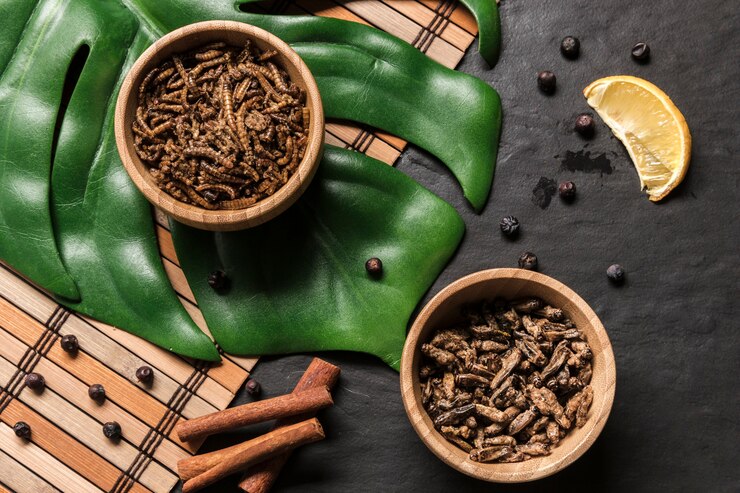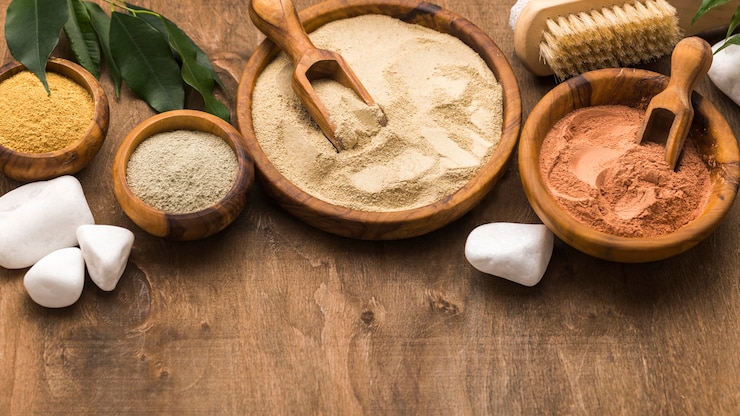Ask Ayurvedic doctor a question and get a consultation online on the problem of your concern in a free or paid mode. More than 2,000 experienced doctors work and wait for your questions on our site and help users to solve their health problems every day.
Shop Now in Our Store
Bhunimbadi Churna: Exploring Ayurvedic & Scientific Insights

Introduction
Imagine an ancient herbal remedy handed down through generations, celebrated in Ayurveda for its wide range of therapeutic applications—yet also standing up to modern scientific scrutiny. This is Bhunimbadi Churna, a cornerstone formulation lauded in many traditional texts for its potential benefits in digestive health, immunity, and more. Despite being rooted in thousands of years of Ayurvedic wisdom, researchers continue to investigate its efficacy and safety today, offering an ever-expanding pool of evidence. In this article, we dive deep into Bhunimbadi Churna’s origins, composition, mechanisms of action, and its place in modern healthcare.
Disclaimer: This article is for informational purposes only. Always consult a qualified healthcare provider before using any herbal formulations or making significant changes to your treatment plan.
Table of Contents
What Is Bhunimbadi Churna?
Bhunimbadi Churna is a powdered herbal formulation recognized in Ayurveda—a holistic medical system that originated in the Indian subcontinent over 3,000 years ago. The term “Churna” generally refers to any finely powdered herbal mixture. In Sanskrit, “Bhunimba” often refers to a variety of herbs (commonly associated with Swertia chirata, or Kirata), known for their bitter properties and potential health-promoting effects.
Other Names and Synonyms
-
Bhunimbadi Churnam
-
Bhunimbadi Powder
-
Bhunimbadi Herbal Blend
Because Ayurveda emphasizes balancing the body’s internal energies (doshas) for optimal well-being, Bhunimbadi Churna is traditionally formulated to address specific imbalances—particularly those linked to digestion and metabolism.
Key Ingredients and Traditional Background
While the exact composition can vary slightly depending on the regional practices and the specific classical texts referenced, Bhunimbadi Churna commonly includes:
-
Bhumi Amalaki (Phyllanthus niruri): Often celebrated for its hepatoprotective properties and its supportive effects on the liver and digestive health.
-
Kirata (Swertia chirata): A potent bitter herb known for its blood-purifying, anti-inflammatory, and antimicrobial characteristics.
-
Guduchi (Tinospora cordifolia): Revered for its immunity-boosting and adaptogenic qualities.
-
Neem (Azadirachta indica): Prized for its antiseptic and antibacterial capabilities, as well as its role in skin health.
In Ayurvedic tradition, bitter-tasting herbs are believed to pacify Pitta and Kapha doshas, which helps in detoxification and internal cooling. Thus, a large proportion of Bhunimbadi Churna’s constituents are bitter herbs.
Mechanism of Action: Ayurvedic and Modern Views
Ayurvedic Perspective
From an Ayurvedic standpoint, Bhunimbadi Churna helps to:
-
Support Agni (digestive fire): By introducing herbs that enhance metabolic and digestive functions, the formulation aims to improve nutrient absorption.
-
Balance Pitta and Kapha: Excess Pitta can manifest as inflammation or acidity, while a Kapha imbalance often appears as sluggishness or mucus buildup. Bhunimbadi Churna’s bitter profile aims to correct these imbalances.
-
Detoxify the system: Bitter herbs are traditionally associated with cleansing the liver and blood of toxins, thereby rejuvenating bodily functions.
Modern Scientific Lens
Contemporary researchers look at Bhunimbadi Churna through pharmacological and biomedical tools to understand its actions, including:
-
Antioxidant properties: Many of the herbs in this formulation show high flavonoid and polyphenol content, which can neutralize harmful free radicals.
-
Anti-inflammatory effects: Laboratory findings often highlight the presence of compounds (e.g., terpenoids, alkaloids) that may reduce inflammation markers in the body.
-
Antimicrobial activity: Some of the ingredients, especially Neem and Kirata, have demonstrated effectiveness against various microbes, including bacteria and fungi.
-
Hepatoprotective actions: Studies on Bhumi Amalaki suggest supportive effects on liver function, an attribute that may carry over when used in multi-ingredient formulas like Bhunimbadi Churna.
Scientific Evidence and Recent Studies
While Ayurvedic literature abounds with references to Bhunimbadi Churna, modern researchers have become increasingly interested in verifying these age-old claims. Below are a few categories of studies and their key findings:
-
Clinical Trials on Liver Health
-
A preliminary clinical trial published in the Journal of Traditional and Complementary Medicine (2019)evaluated the hepatoprotective effects of herbal formulations containing Bhumi Amalaki and Kirata. Participants showed improved liver enzyme profiles and reduced oxidative stress markers.
-
Another study, available on PubMed (2020), suggests that multi-herb formulas with Kirata can help in managing mild hepatic inflammation.
-
-
Antimicrobial Research
-
Research in the Indian Journal of Microbiology (2018) points out that formulations including Neem and Tinospora cordifolia exert a broad-spectrum antimicrobial effect. The synergy of these herbs may inhibit the growth of certain bacteria known to cause digestive tract infections.
-
-
Metabolic Health
-
A study in the AYU journal (2017) noted that regular intake of bitter Ayurvedic herbs could support healthy blood glucose metabolism, though more large-scale human trials are needed to validate these findings conclusively.
-
-
Anti-inflammatory and Analgesic Studies
-
Phytotherapy Research (2021) published an in-vitro analysis suggesting that the anti-inflammatory compounds in Swertia chirata might be beneficial for inflammatory conditions.
-
While these studies are promising, it’s crucial to remember that many have limitations like small sample sizes and lack of long-term follow-up. Ongoing research and randomized controlled trials will likely yield more definitive conclusions.
Potential Benefits of Bhunimbadi Churna
-
Supports Digestive Health
-
May help alleviate occasional indigestion, bloating, and irregular bowel movements by fortifying digestive enzymes.
-
Improves gut motility, thus potentially preventing toxin buildup.
-
-
Promotes Liver Function
-
Bhumi Amalaki and Kirata are widely studied for their protective role in liver health.
-
Antioxidant compounds may help maintain normal liver enzyme levels.
-
-
Immune System Support
-
Guduchi and Neem, two potent herbs in the blend, have immunomodulatory effects.
-
Regular use might help the body adapt to stress and bolster defenses against pathogens.
-
-
Anti-inflammatory and Detoxification
-
The formulation’s bitter constituents help to remove metabolic waste, possibly reducing inflammation and oxidative stress.
-
Could be beneficial for skin health, given its detoxifying nature.
-
-
Possible Blood Sugar Regulation
-
Early research hints at beneficial effects on glucose metabolism, although more extensive human trials are needed for concrete evidence.
-
Usage, Dosage, and Precautions
Traditional Recommendations
-
Dosage: In classical Ayurvedic practice, 1–3 grams of Bhunimbadi Churna may be taken once or twice daily, often with warm water or honey.
-
Timing: Typically recommended before or after meals, depending on the practitioner’s guidance and specific health objectives.
Modern Practical Tips
-
Consult an Expert: A licensed Ayurveda practitioner or qualified healthcare provider can help tailor dosages to individual needs, particularly if you are dealing with chronic conditions.
-
Allergies and Sensitivities: Even herbal formulations can trigger allergic reactions in some people. Monitor for any unusual symptoms such as itching, rashes, or gastrointestinal discomfort.
-
Avoid Self-prescription: If you’re pregnant, breastfeeding, or taking medications for conditions like diabetes or hypertension, talk to your doctor or pharmacist before starting Bhunimbadi Churna.
Potential Side Effects
-
Mild gastrointestinal disturbances, particularly when starting out or if taken in excessive amounts.
-
Risk of hypoglycemia if combined with glucose-lowering medications, given the potential glucose-regulating effects of bitter herbs.
Common Questions (FAQ)
-
Is Bhunimbadi Churna suitable for everyone?
-
Generally, it is considered safe for most healthy adults. However, individuals with underlying health conditions, pregnant or breastfeeding women, or those on specific medications should consult a healthcare provider first.
-
-
How quickly can I expect results?
-
The timeframe varies based on individual factors like metabolism, lifestyle, and dosage. Some users report improvements in digestion and energy levels within a few weeks, while deeper benefits (e.g., liver enzyme normalization) may take longer.
-
-
Can Bhunimbadi Churna be combined with other Ayurvedic remedies?
-
Yes. Ayurveda often involves tailored, multi-herbal approaches. Yet, combining different remedies should be done under the supervision of a qualified practitioner to avoid potential interactions.
-
-
Is Bhunimbadi Churna backed by modern science?
-
Several studies highlight its hepatoprotective, antimicrobial, and anti-inflammatory effects, although large-scale clinical trials are still limited. Ongoing research seeks to confirm these findings more definitively.
-
-
Are there any dietary restrictions while taking Bhunimbadi Churna?
-
Ayurveda typically advises a balanced diet free from excessively oily, spicy, or processed foods to complement herbal treatments. Reducing such foods may enhance the formulation’s effectiveness.
-
Expert Opinions and Consensus Guidelines
Established Clinical Guidelines
While there is no single, universally accepted clinical guideline specifically for Bhunimbadi Churna in Western medicine, reputable institutions like the World Health Organization (WHO) and the National Institutes of Health (NIH) have sections devoted to the study of traditional medicines and herbal supplements. They emphasize:
-
Standardization of herbal products.
-
The importance of evidence-based research to validate traditional claims.
-
The necessity of monitoring for potential herb-drug interactions.
Ayurvedic Consensus
In classical Ayurveda texts (e.g., Charaka Samhita, Sushruta Samhita), the use of bitter herbal formulations like Bhunimbadi Churna is advised for detoxification, digestion improvement, and internal cooling. Many contemporary Ayurveda practitioners recommend it for balancing Pitta and Kapha doshas, especially in conditions involving the liver or gastrointestinal tract.
Note: Always cross-reference with modern medical advice, as integrated approaches often yield the best outcomes.
Conclusion
Bhunimbadi Churna stands at the fascinating intersection of ancient Ayurvedic wisdom and modern scientific inquiry. Rooted in time-tested formulations, it brings together herbs known for their digestive, liver-supportive, and immune-modulating properties. Recent studies, while needing more robust clinical trials, provide promising indicators of its efficacy and safety profile.
However, like any medical or herbal supplement, Bhunimbadi Churna should be approached with informed caution. Consulting with a healthcare provider ensures that this herbal blend aligns with your unique health status and treatment plan. Whether you’re seeking improved digestion, immune support, or just an overall sense of well-being, Bhunimbadi Churna might be a valuable addition to your healthcare routine.
Call to Action
-
Share this article with friends, family, or anyone interested in holistic health and Ayurveda.
-
Comment below to share your experience or ask further questions about Bhunimbadi Churna.
-
Subscribe to our newsletter for more in-depth articles on herbal remedies, their scientific validations, and wellness tips!
Disclaimer: This article is for educational purposes and should not replace professional medical advice. Always discuss with a qualified healthcare provider before beginning any new supplement, especially if you have underlying medical conditions or take prescription medication
This article is checked by the current qualified Dr. Harsha Joy and can be considered a reliable source of information for users of the site.



